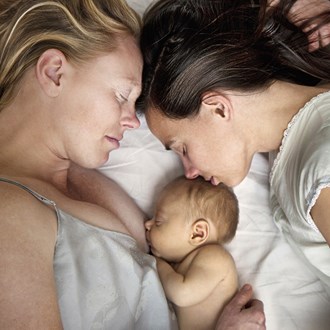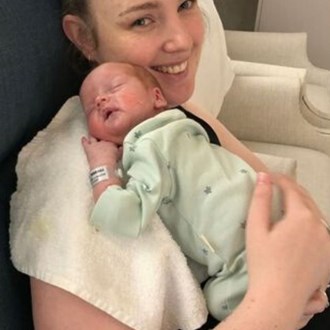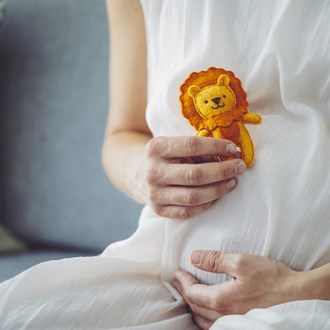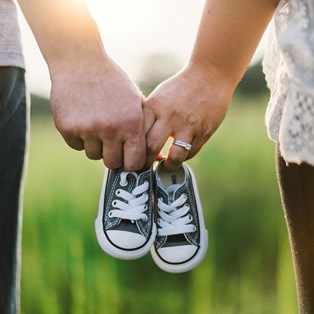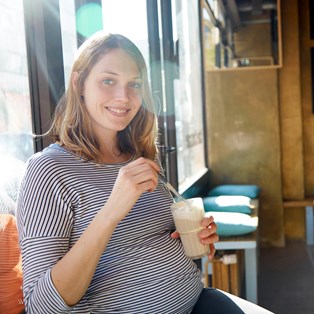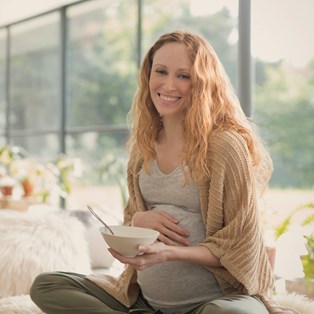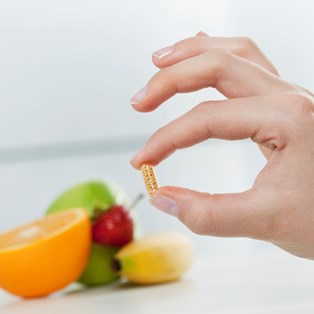Pregnancy Nipples: Itchy, Sore & Sensitive Nipples?

What's normal? What's not? Here's what's happening!
By Frances Sheen
March 14 2019
What changes should you expect in your nipples during pregnancy?
Your breasts and nipples will change throughout your pregnancy as your milk ducts prepare for breastfeeding.
By about 12 weeks into the pregnancy, the skin of the nipple and areola may start to darken or 'pigment' - this doesn't happen to all women but often it's more noticeable in women with darker hair and darker complexions.
Throughout your pregnancy, but particularly in the first 12 weeks you may notice your nipples becoming more prominent and even tingly.
You might also have very sensitive and sore nipples. Some pregnant women find it difficult to wear a bra or have their nipples touched during this time. It may be easier to start wearing a looser comfortable bra, crop top or even a nursing bra in early pregnancy.
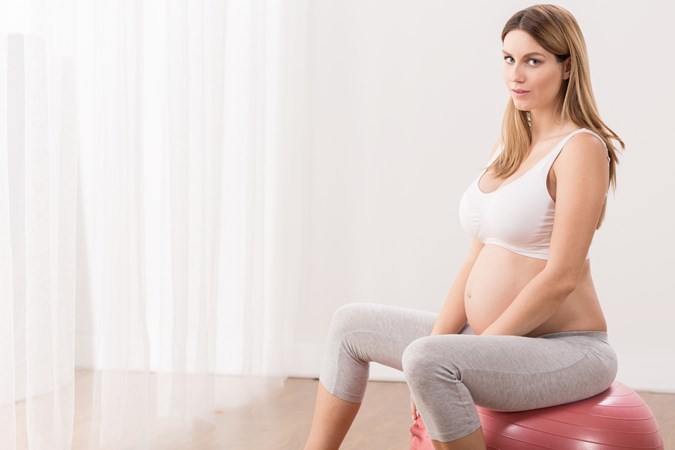
Getty
Nipple and breast changes in your first trimester
Surging hormones and a change in the feel and structure of your breast may mean your nipples and breasts are sensitive and tender from as early as three or four weeks pregnant - and this can be an early sign of pregnancy.
Lots of women say they knew they were pregnant before they took a test because their breasts had grown in size, and their nipples were very sensitive - doctors often talk about this as one of the first pregnancy symptoms.
Some mums-to-be have sore breasts and tender nipples during pregnancy right up until the birth, but for most it eases off after the first trimester.
In the first 12 weeks, you might also notice that the veins on your breasts become larger, look more blue, and are more visibly pronounced. Your breasts will grow in size. Some women notice an ache right up into their armpits - and that's completely normal.
Your nipples might become larger and more sensitive, and darker around the areola. You may also see small painless bumps on your areola. These are called Montgomery tubercles and they are very normal and necessary. Believe it or not they have antiseptic and lubricating qualities, and help support breastfeeding.
Nipple and breast changes in your second trimester
During the second trimester, oestrogen levels in your body increase. Your boobs will still feel full and very heavy as your milk ducts grow. Some women find they go up one or two bra sizes, while others go up many more. Some don't notice any difference at all.
If your breasts are very sore, get properly fitted for a new bra - that isn't underwired - so you will feel more comfortable.
You might also find that your breasts produce some colostrum during this second trimester. Colostrum is a very early form of breast milk and it's what your baby will feed on in the very first hours and days of its life. It's a very rich form of breast milk. You may find that you get nipple discharge as it leaks from your nipples. It's fine if it does, and you can wipe it away, but do not tweak your nipples to try and get more out - there are reports this can induce premature labour.
Your nipples should start to feel less sensitive at this time, but if they do relax, it's perfectly normal.
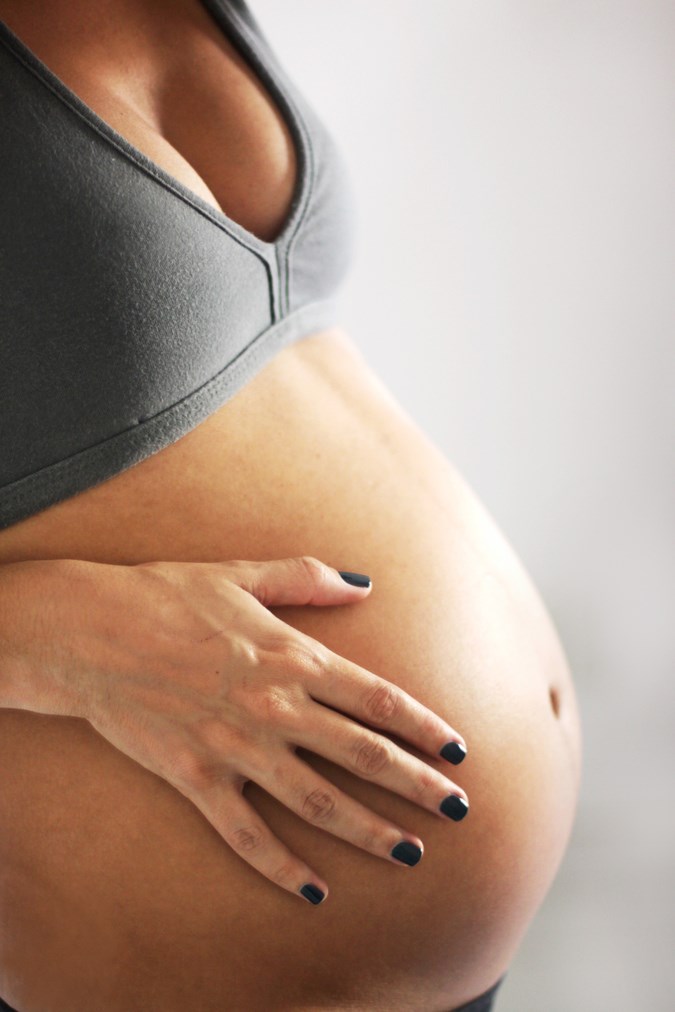
Getty
Nipple and breast changes in your third trimester
In your last trimester, you will find that your boobs become more dense and heavy as they prepare for breastfeeding after the birth. Your nipples will become larger and might become more pronounced. If you have inverted or flat nipples, you may find that they start to protrude a little.
Many women experience a darkening of their nipples and areola until they are a very dark brown, often almost black-ish.
You should consider buying maternity bras and wearing them now.
What if I get itchy nipples?
As the skin on your breasts stretches and the blood flow to that area increases as your breasts grow in size, you may experience itching or dryness. Try using moisturiser, like cocoa butter, on them to see if it eases. Some mothers swear by using petroleum jelly to help the itching before it starts and to protect the nipple from chafing on the bra.
Try and wear a soft bra that doesn't irritate the skin too much.
What if I get stretch marks on my breasts and around my nipples?
Because your breasts grow fairly rapidly, it isn't unusual to get stretch marks on the sides of your boobs or at the front of them during pregnancy.
There is no magic cure for stretch marks, but try to keep your skin as supple and moisturised as possible so make sure you cover the breasts in moisturiser after a shower and before bed. You an also try wearing a very soft bra or crop top to bed at night. Some women like to wear a sports bra.
Abnormal nipple and breast changes in pregnancy
As your breasts grow and your milk ducts start to prepare themselves for the birth, it isn't unusual to feel small lumps and bumps under the skin. Sometimes the milk ducts can get blocked during pregnancy and if you feel a lump that worries you, try a warm compress on that area and then see your doctor if ti doesn't ease. Blocked milk ducts are red, tender-to-the-touch, hard lumps in your breasts. Try to avoid wearing an under-wired bra during pregnancy - this can help stop milk ducts from getting blocked.
Your breasts will grow rapidly during this time, but if you notice that one is growing more than the other, see your GP or midwife so they can check all is well. Occasionally this can be a very early sign of breast cancer.
Remember if you're worried about any lumps on your breast during this time, see your GP or midwife.

